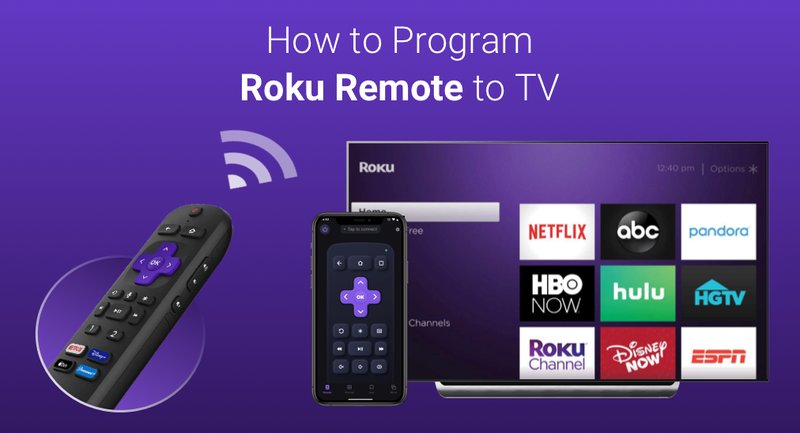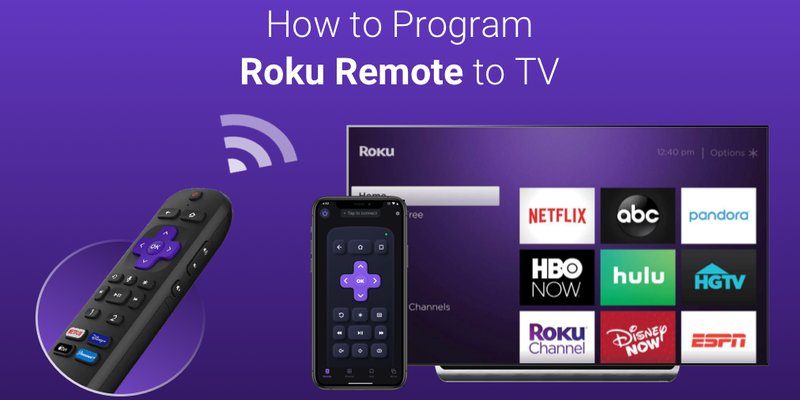
Imagine your Roku remote as a Swiss Army knife. It’s handy, multi-purpose, sleek—and you wish it could do even more. The idea of controlling both a Roku streaming device and a DVD player with just one remote almost feels too good to be true. I know the struggle of fumbling around in the cushions for “the right one.” Trust me, we all dream of a remote control utopia.
Let’s talk real talk about what Roku streaming device remotes are designed for, dig into the nitty-gritty of remote codes, pairing, and maybe a bit of troubleshooting. We’ll figure out if your Roku remote can actually be the hero that unites your entertainment center—or if it’s just wishful thinking. Ready for some clarity?
Meet the Roku Remote: What It’s Really Made For
Here’s the thing: not all remotes are created equal. Roku streaming device remotes, whether you have the basic purple-tag one or a fancier voice remote, are generally designed to control two things: your Roku device and, sometimes, your TV’s power and volume. That’s it. Their main job is to help you binge-watch and stream without fuss. If you peel back the case (don’t actually do this!), there’s no magic chip inside meant to handle dozens of devices like those old-school jumbo “universal” remotes.
So why is this? Roku wants things simple. The remote is intentionally stripped-down to stay user-friendly; you won’t find a load of extra buttons labeled “DVD,” “AUX,” or “SAT.” The idea is to make streaming a breeze—not to morph into a one-remote-fits-all gadget.
Now, if you own a Roku Voice Remote Pro or one of the enhanced remote models, you might notice it can sometimes control your TV’s volume and power. That’s because Roku cleverly lets the remote learn TV codes for basic functions. But controlling a DVD player? Whole different ball game.
Remote Codes and Why They Matter
Let me explain remote codes with a metaphor: Think of “remote codes” like secret handshakes between your remote and other devices. When you pair your Roku remote to a TV, it’s sending out these special signals to say, “Hey, it’s me—let’s work together!” For TV power and volume, Roku has a short list of these handy codes built in.
But here’s the catch: These codes are *only* for TVs, not DVD players, soundbars, or other gadgets. If you poke around in the Roku setup menus, you’ll notice that when you go to pair your remote, it only offers TV brands. No mention of DVD or Blu-Ray manufacturers, because Roku never programmed those codes into the remote.
Universal remotes, on the other hand, are like polyglots. They know hundreds, even thousands, of codes—from obscure VCRs to the latest streaming sticks. That’s why you can program a universal remote to almost anything, but with the Roku remote, you’re pretty much limited to Roku streamers and some TV basics.
Insight: If you’re hoping to sync your Roku remote with your DVD player, you’ll hit a wall—there are just no codes in the Roku remote to make that handshake happen.
Pairing, Syncing, and the Limits of Roku Remotes
So, you might be wondering, “But can’t I just do some fancy pairing trick? Maybe there’s a secret code or sequence?” I totally get it—these things feel mysterious, but the reality is more straightforward.
When you pair a Roku remote, the device searches for Roku streaming gadgets and, in some cases, your TV’s basic controls. The process is pretty guided: you follow on-screen prompts, point your remote, and hope the TV volume changes. If not, you try a few more codes, and eventually, it sticks—or it doesn’t.
For DVD players, there’s simply no built-in pairing protocol. Even if you try to “reset,” “sync,” or hold every button combination you can think of, the Roku remote just doesn’t know how to talk to a DVD player. It’s like trying to use a garage door opener to drive your car. Both use signals, both live in your house, but they’re not designed to cross paths.
Battery swaps, remote resets, software updates—none of these will magically add DVD control. I’ve seen people spend way too long trying to force it, only to end up frustrated and returning to their pile of remotes.
Universal Remotes: The Real Multi-Taskers
Let’s give credit where it’s due: universal remotes truly are the MVPs of remote control chaos. Brands like Logitech, GE, and even those off-brand ones at Walmart are made for exactly this mission. They’re loaded with codes for every device imaginable—TVs, DVD players, soundbars, streaming sticks—you name it.
If having just *one* remote is your dream, this is where you should look. You can use their instruction booklet to input codes, press buttons to sync, and—after a few minutes of setup—you’re good to go. Many even let you program macros (like “Movie Night!”) that turn on everything you need with one tap. Magic, right?
Here’s the bottom line: Roku remotes aren’t universal remotes. They’re streamlined for streaming, not multi-device harmony. If you want to control your DVD player, TV, and Roku all at once, invest in a solid universal remote. It’ll save your patience (and maybe your sanity) in the long run.
Common Troubleshooting: When Remotes Don’t Cooperate
Honestly, remote control troubleshooting has ruined more movie nights than spoilers ever could. If you’re planning to sync or reset a remote and nothing’s working, it’s probably not you—it’s the tech.
For Roku remotes, the most common fixes are:
- Battery check: Weak batteries can make remotes act flaky, especially for pairing or syncing. Swap them out if in doubt.
- Resetting the remote: Some Roku remotes have a little button inside the battery compartment. Hold it for a few seconds to re-pair.
- Unplug and replug: If your Roku isn’t responding, unplug the device, wait a few seconds, and plug it back in. It’s the classic “turn it off and on again.”
- Line of sight: Remotes that use infrared (the non-fancy ones) need a clear line to the Roku box. Obstacles can mess with the signal.
But if you’re stuck trying to sync the Roku remote to a DVD player? Don’t waste your time. There’s no hidden menu, code, or reset that’ll unlock this feature. The remote just wasn’t built for it.
Shortcuts, Hacks, and Why They (Don’t) Work
You might stumble across forums or YouTube tutorials promising “hacks” to get your Roku remote to control more devices. Maybe someone mentions using IR learning or secret pairing modes. Let’s be real: most of these are wild goose chases. The standard Roku remote doesn’t have learning capabilities like some universal remotes.
There are a few rare third-party remotes (often labeled “universal for Roku and TV”), but even these generally don’t support DVD players. They’re mostly designed to replace lost Roku remotes while still handling TV power and volume. If you do buy one, read the specs carefully before you get your hopes up.
If you’re technical, you might find creative solutions, like using a smart home hub or an IR blaster paired with an app. But for regular folks, these options are overkill. You’ll spend more time setting things up than actually enjoying your movie.
Alternatives: Making Life Simpler Without More Remotes
Alright, let’s say you’re sick of the remote shuffle, but you don’t want to buy another gadget. What else can you do?
- HDMI-CEC: Many modern TVs and DVD players support HDMI-CEC, which lets one device control another. Sometimes, using your TV’s remote is all you need to run your DVD player via menu navigation. It’s not perfect, but it’s something.
- Streaming your DVDs: Some people digitize their DVD collection and use their Roku to play the digital files. That way, you’re streaming everything, no extra remotes needed.
- Use your phone: The Roku mobile app lets you control your streaming device right from your smartphone. It can’t run your DVD player, but at least it saves you from another lost remote panic.
Ultimately, the most straightforward solution is to go with a universal remote if you’re determined to control everything with one device.
Final Thoughts: Keeping Home Entertainment Hassle-Free
If you were hoping your Roku streaming device remote could take over DVD player duties, I’m sorry to say that’s just not in its toolkit. It’s a specialist—fantastic at what it does but not meant to juggle every entertainment gadget in your living room. Universal remotes are the real multitaskers here, while Roku remotes keep things breezy and focused.
So, while you may need to keep that stack of remotes for now, at least you know what your options are. Don’t waste hours trying to sync what simply won’t sync. Sometimes, knowing the limits of your tech is the fastest way to an easier, stress-free movie night. And hey, maybe in the future, that remote utopia will finally arrive. For now, let’s just enjoy the show—no remote wars required.
